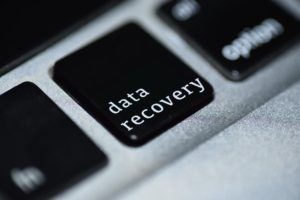Every year, there are high-impact viruses that plague individuals and businesses alike. One of the newest that has wreaked havoc on the world of IT is known as Kovter. It’s affecting a number of computers and there are a lot of people that have been impacted by its destruction.
What is Kovter?
Kovter works as a Trojan. It has acted as a ransomware downloader as well as click-fraud malware. It is disseminated using malspam email attachments that contain malicious office macros. One of the ways that this fileless malware has been able to evade detection is by hiding inside of registry keys.
There has been a number of reports that indicate the Trojan infections receive updated instructions from a command and control infrastructure that serves as a remote access back door. When this happens, the hackers will have an access point into your computer or server.
Kovter showed up several years ago and continues to be the biggest threat throughout 2018. Part of this is because it has evolved significantly. It may use code injection as a way of infecting the target and will steal information so that it goes back to the command and control servers.
How to Look for Kovter
Kovter is really good at hiding itself. It generally infects a computer using an attachment that comes over as a micro-based spam. Once the attachment is opened, it will install on the computer and hide within the registry entries. Most of the attachments are compromised Microsoft office files.
Since it is fileless, it can be difficult to detect. However, you want to make sure that your organization is aware of how to protect against email threats. Use various anti-spam filters so that malicious emails can be blocked before reaching the endpoint user. You also want to make sure that security updates are applied as soon as possible.
Who Has Been Affected?
A number of people throughout the UK, US, Canada, and Australia have been affected by the Trojan. Many people found the virus through a malvertising campaign or Traffic Junky. People were sent to a pop-up that told them they needed to install an update to their browser. By doing so, they unknowingly downloaded Kovter to their computer.
It’s unclear as to how many computers have actually been affected – though the number is easily into the tens of thousands since one version or another has been around since as early as 2011.
What You Can Do
You need to be sure that you have a high level of security within your business. You want to make sure that you are protecting your servers and workstations so that they stay free of viruses and Trojans. Otherwise, malware can render your computer absolutely useless or result in important data being lost or stolen.
Webroot Antivirus is a 20-time winner from PCMag. It provides you with the antivirus protection on all of your devices so that you can enjoy a greater level of peace of mind. You get advanced threat protection and the security is always on. You can stop ransomware and enjoy real-time blocks on harmful sites. This way, no matter how much you teach your employees not to go to specific sites, you can ensure that dangerous sites are blocked to avoid various problems. Additionally, based on the antivirus protection that you choose, you will also be able to monitor your firewall and network connection and secure various smartphones and tablets that are used by your employees.
Learn more about Webroot Antivirus and how it can protect your servers and workstations by contacting SystemsNet today. Our various packages will monitor your systems and help you with all of the various components of your IT infrastructure. As geeks, we work hard to help you protect your systems

